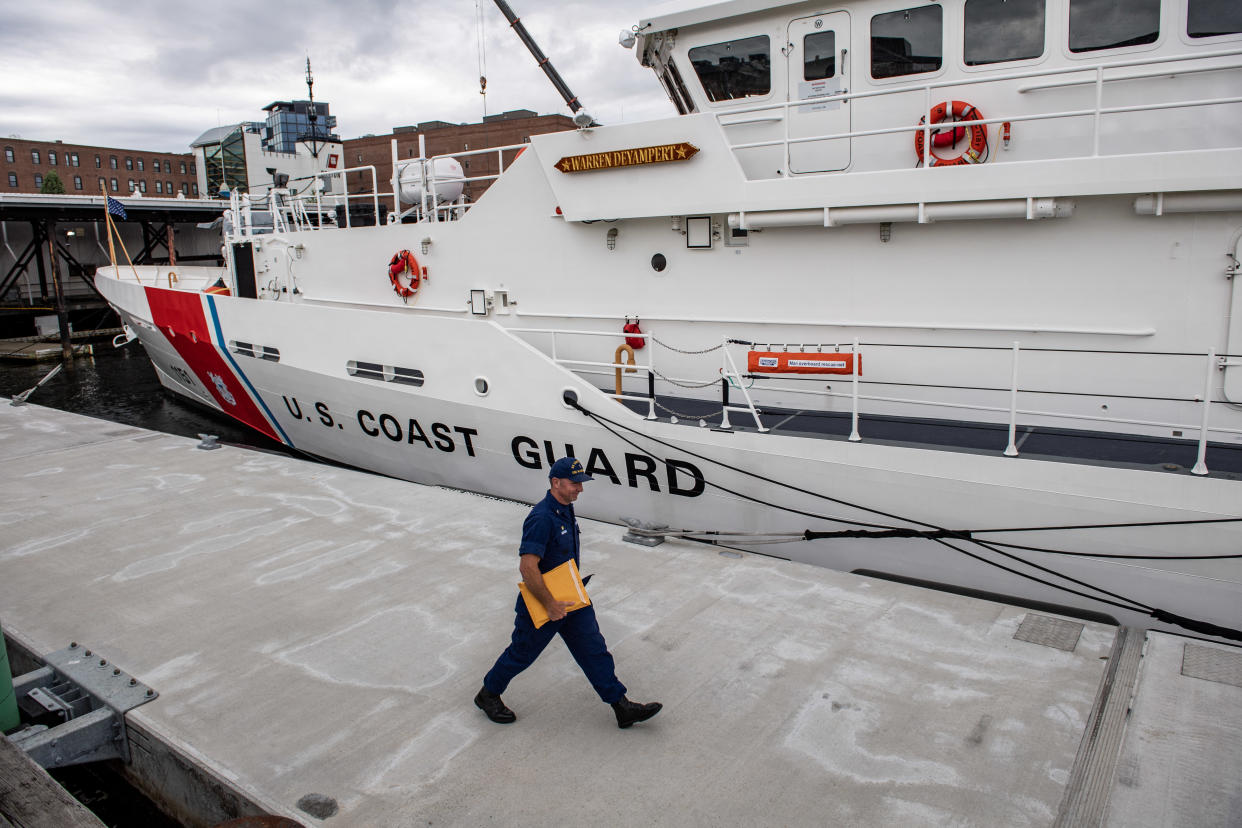U.S. Navy Sends Deep Ocean Salvage System In Race To Find Titanic Sub

A member of the Coast Guard walks by a Coast Guard Cutter at the US Coast Guard Base Boston in Boston, Massachusetts on June 20, 2023. Credit - Joseph Prezioso—AFP/Getty Images
The U.S. Navy announced plans Tuesday to send a deep-water lifting system to help in the ongoing effort to rescue and recover a minivan-sized submersible that went missing Sunday in the Atlantic Ocean after taking tourists to visit the wreck of the Titanic.
The advanced salvage system, as well as subject matter experts, are expected to arrive Tuesday evening in St. Johns, Newfoundland, Canada. The Navy personnel and equipment support the unified command led by the U.S. Coast Guards, which is coordinating rescue and recovery efforts along with Canadian forces and vessel’s parent company, OceanGate Expeditions.
“This is a complex search effort, which requires the use of subject matter expertise and specialized equipment,” Coast Guard Captain Jamie Frederick told reporters. “While the U.S. Coast Guard has assumed the role of search and rescue mission coordinator, we do not have all of the necessary expertise and equipment required in a search of this nature.”
Read more: Missing Titanic Tourist Vessel Crew Have Around 40 Hours of Breathable Air Left
The small submersible, dubbed Titan, initially had a 96-hour oxygen supply before vanishing Sunday with five people onboard, including an OceanGate pilot with and four passengers who paid $250,000 for an eight-day expedition to visit the Titanic wreckage.
By midday Tuesday, the vessel only had about 40 hours of oxygen left, Frederick said, adding pressure to locate it. “The unified team is working around-the-clock to bring all available assets and expertise to bear as quickly as possible in an effort to solve this very complex problem,” he said.
The specialized equipment that the Navy sent Tuesday is known as the Flyaway Deep Ocean Salvage System. It’s a portable lift system that’s designed to recover bulky sunken objects such as aircraft or small vessels that weigh up to 60,000 pounds. It belongs to the Navy’s Supervisor of Salvage and Diving (SUPSALV), which provides technical, operational, and emergency support for these sorts of missions.
Read more: See Photos of the Wreck of the Titanic When It Was First Discovered
Last year, for instance, SUPSALV’s crews helped recover a F-35 stealth fighter jet that had sunk about 12,400 feet below the South China Sea. Their crews set a record in 2021 when they pulled up a MH-60S helicopter that plunged to a depth of 19,075 feet off the coast of Okinawa, Japan.
The U.S. Coast Guard has been conducting searches 900 miles off the coast of Cape Cod at the surface level, underwater using sonar technology, and also by air. Additionally, the U.S. military sent three C-17 planes loaded with rescue-related cargo and equipment from Buffalo, NY to St. Johns. A massive commercial pipe-laying ship, equipped with two remote-control underwater vessels, also arrived at the scene earlier on Tuesday to help with the search.
The hope is that the new equipment will be capable of reaching the depths necessary to locate and recover the missing sub. The Titanic, meanwhile, is located about 370 miles off the coast of Newfoundland, Canada, at a depth of roughly 12,600 feet—or 2.3 miles. More than 1,500 people lost their lives when the RMS Titanic sank on its maiden voyage from Southampton, England, to New York City, on April 15, 1912.

